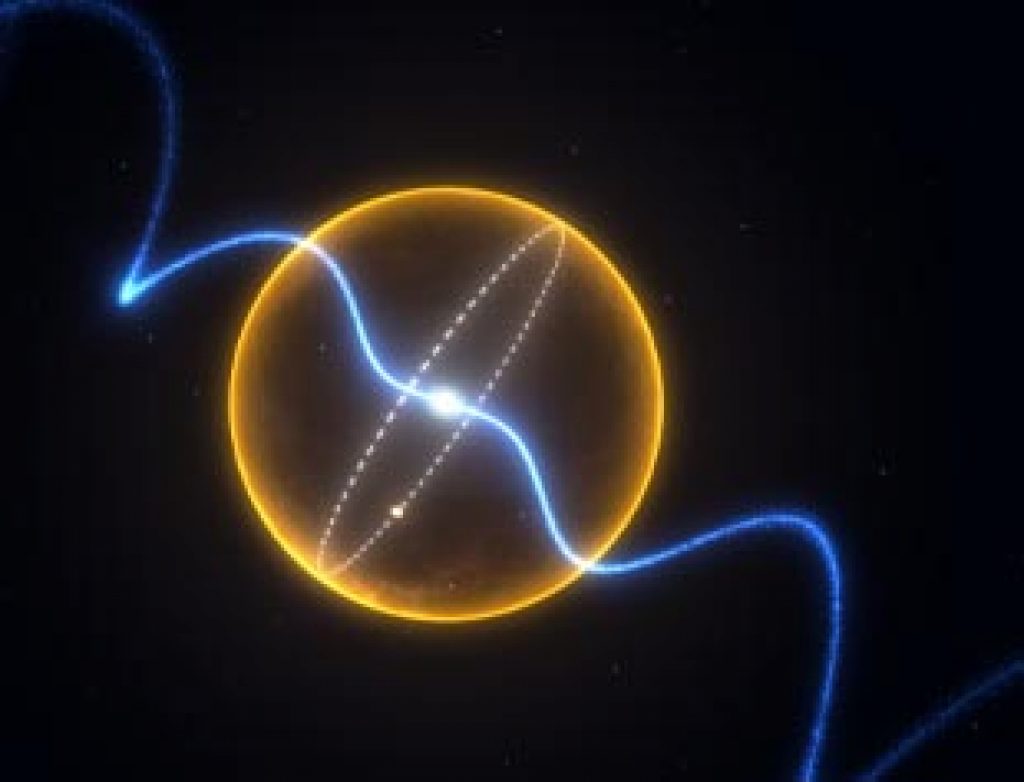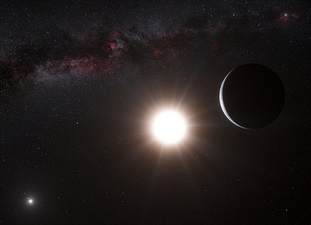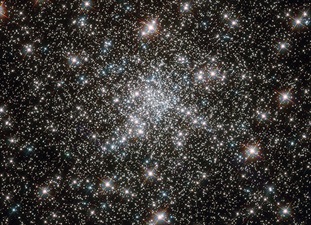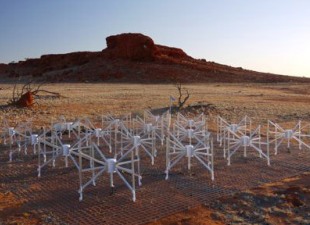
AsianScientist (Aug. 28, 2011) – Astronomers using ‘The Dish’ – CSIRO’s radio telescope near Parkes, New South Wales – believe they’ve found a small planet made of diamond, orbiting an unusual star called a pulsar.
The discovery was made by an international research team, led by Professor Matthew Bailes of Swinburne University of Technology in Melbourne, Australia, and is reported on Aug. 25 in the journal Science.
“Although bizarre, this planet is evidence that we’ve got the right understanding of how these binary systems evolve,” said Dr. Michael Keith of CSIRO Astronomy and Space Science, one of the research team members.
The international team first found an unusual star called a pulsar, now named PSR J1719-1438, using the 64 meter Parkes radio telescope in eastern Australia.
Pulsars are small spinning stars about 20 km in diameter – the size of a small city – that emit a beam of radio waves. As the star spins and the radio beam sweeps repeatedly over Earth, radio telescopes detect a regular pattern of radio pulses.
The researchers followed up their discovery with the Lovell radio telescope in the UK and one of the Keck telescopes in Hawaii, and noticed that the arrival times of the pulsar’s pulses were systematically altered in a way that must be caused by the gravitational pull of a small planet orbiting the pulsar.
The modulations of the radio pulses reveal several things about the planet:
First, it orbits the pulsar in just two hours and ten minutes, and the distance between the two objects is 600,000 km – a little less than the radius of our Sun.
Second, the planet must be small, less than 60,000 km (about five times the Earth’s diameter). The planet is so close to the pulsar that, if it were any bigger, it would be ripped apart by the pulsar’s gravity.
But despite its small size, the planet has slightly more mass than Jupiter, which provides a clue to its origin, says Prof. Bailes.
The team thinks that the ‘diamond planet’ is all that remains of a once-massive star, most of whose matter was siphoned off towards the pulsar. Pulsar J1719-1438 and its companion planet are so close together that the planet can only be a very stripped-down ‘white dwarf’ star, one that has lost its outer layers and over 99.9 percent of its original mass.
“This remnant is likely to be largely carbon and oxygen, because a star made of lighter elements like hydrogen and helium would be too big to fit the measured orbit,” said Dr. Keith.
The density means that this material is certain to be crystalline – that is, a large part of the star may be similar to a diamond.
The pulsar and its planet lie 4,000 light-years away in the constellation of Serpens (the Snake). The system is about an eighth of the way towards the Galactic Center from the Earth.
The article can be found at: Bailes M et al. (2011) Transformation of a Star into a Planet in a Millisecond Pulsar Binary.
——
Source: CSIRO; Photo: Swinburne Astronomy Productions.
Disclaimer: This article does not necessarily reflect the views of AsianScientist or its staff.












